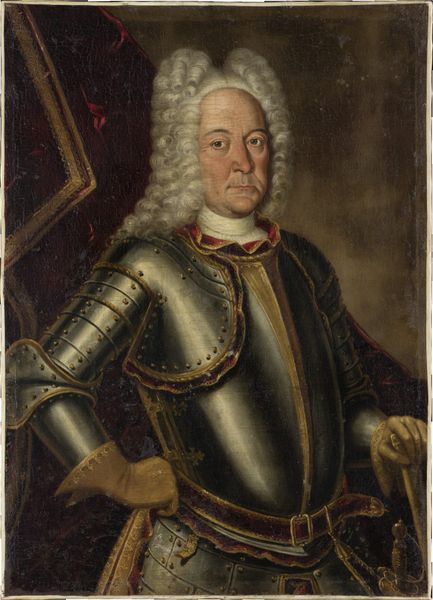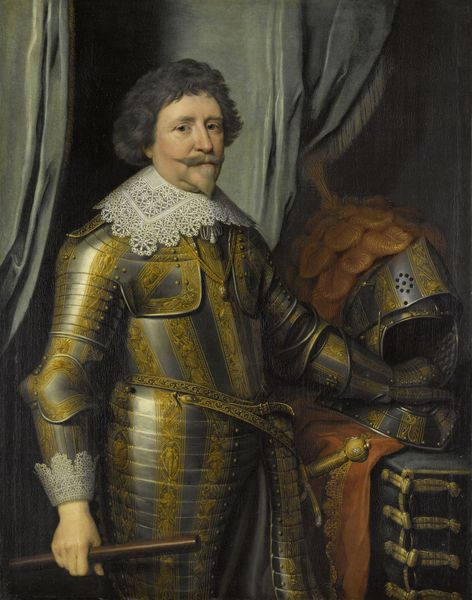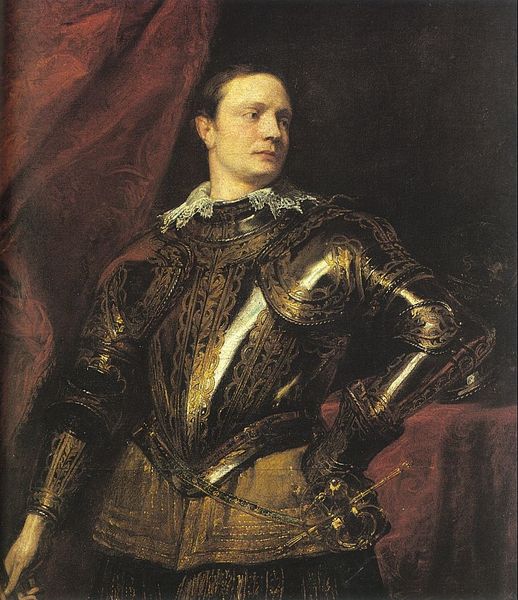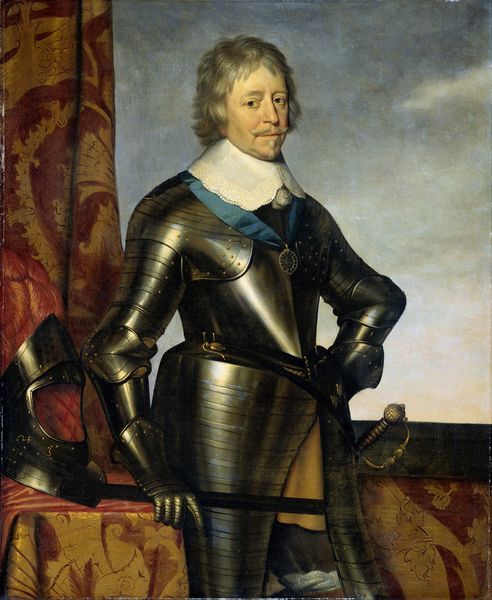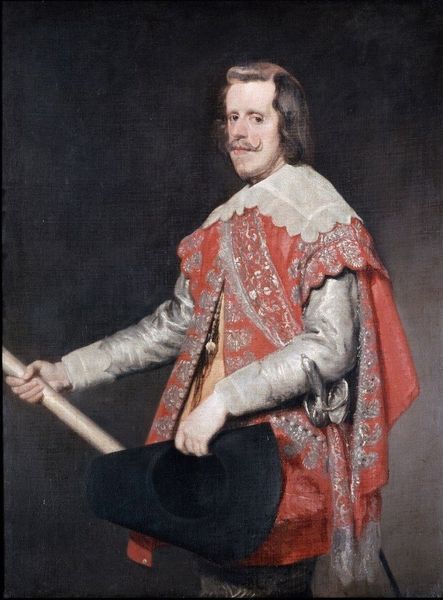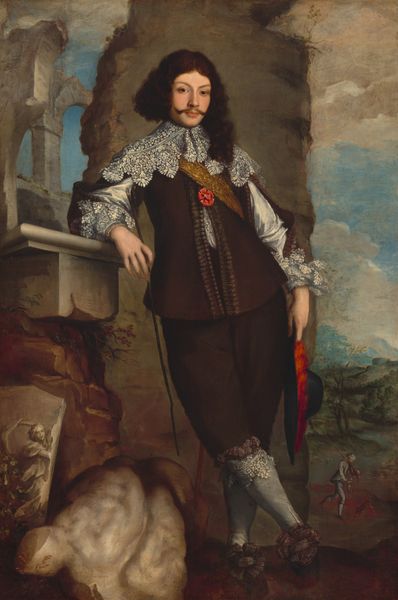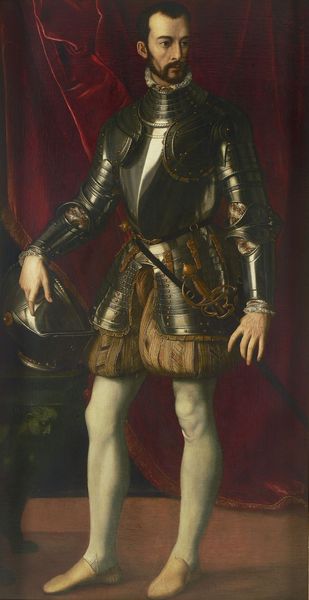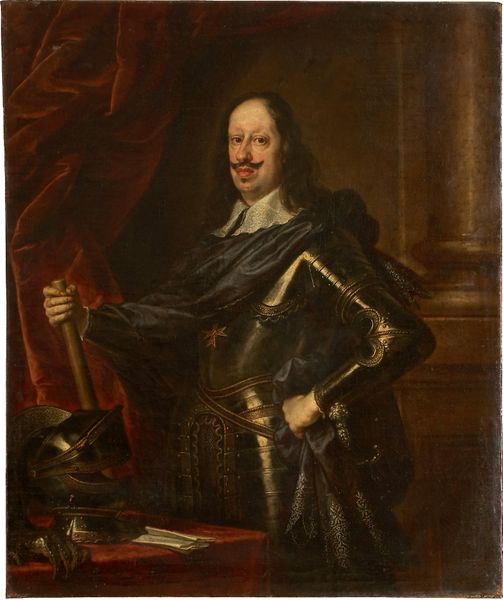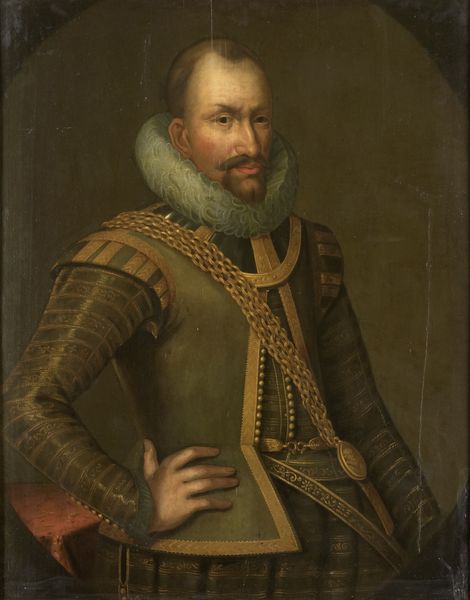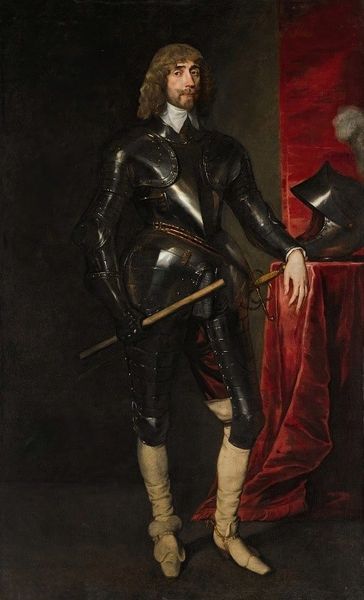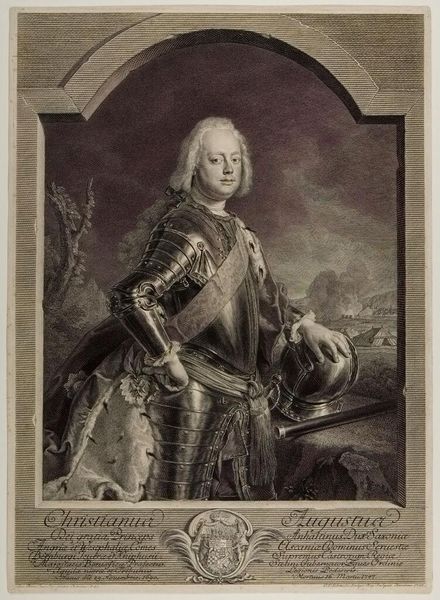
oil-paint
#
portrait
#
baroque
#
oil-paint
#
oil painting
#
history-painting
Copyright: Public Domain: Artvee
Curator: Here we have Anthony van Dyck's oil on canvas painting, “Portrait of a Man in Armor,” estimated to have been painted between 1616 and 1627. Editor: My immediate impression is one of contrast – the stark darkness enveloping this armored figure highlights his resolute gaze and the almost delicate shimmer of his polished steel. It feels… stately but constrained. Curator: Indeed. Van Dyck, positioned at the Flemish court at the time, catered to patrons keen to portray themselves as figures of power and tradition. This portrait fits squarely into that trend of legitimizing rule through artistic representation. Editor: I see what you mean, but what I am struck by is the visual interplay: the soft, fleshy face juxtaposed against the hard, cold metal. Notice also the red accents, highlighting and creating diagonals on the shoulders and waist that pull us into the figure. It is a brilliant construction of texture and line! Curator: Of course. However, beyond the visual, there's a performative aspect here too. Armor had, by this period, become increasingly ceremonial. Van Dyck’s man isn't just depicted as powerful, but connected to a noble, chivalric past, reassuring the present through the weight of inherited authority. Editor: A fascinating point. Although from my perspective, that authority resonates through Van Dyck's masterful use of chiaroscuro, the way light dances off the metal and sets it against the tenebrous backdrop. This very Baroque manipulation, irrespective of historical significance, generates its own power! Curator: Precisely. Van Dyck’s talent lay in creating a fiction where power, person, and portrait collude to legitimize the subject. It’s propaganda, yet the artistic execution is undeniable. Editor: So while your historical lens elucidates the 'why' of the painting, my gaze, guided by composition, finds an enduring aesthetic allure. Regardless of any narrative function. Curator: And therein lies its power, truly. Both then, and even here in this space, several centuries after it was created! Editor: I concur! A portrait commanding attention still, whether through contextual narrative, or compositional design.
Comments
No comments
Be the first to comment and join the conversation on the ultimate creative platform.
